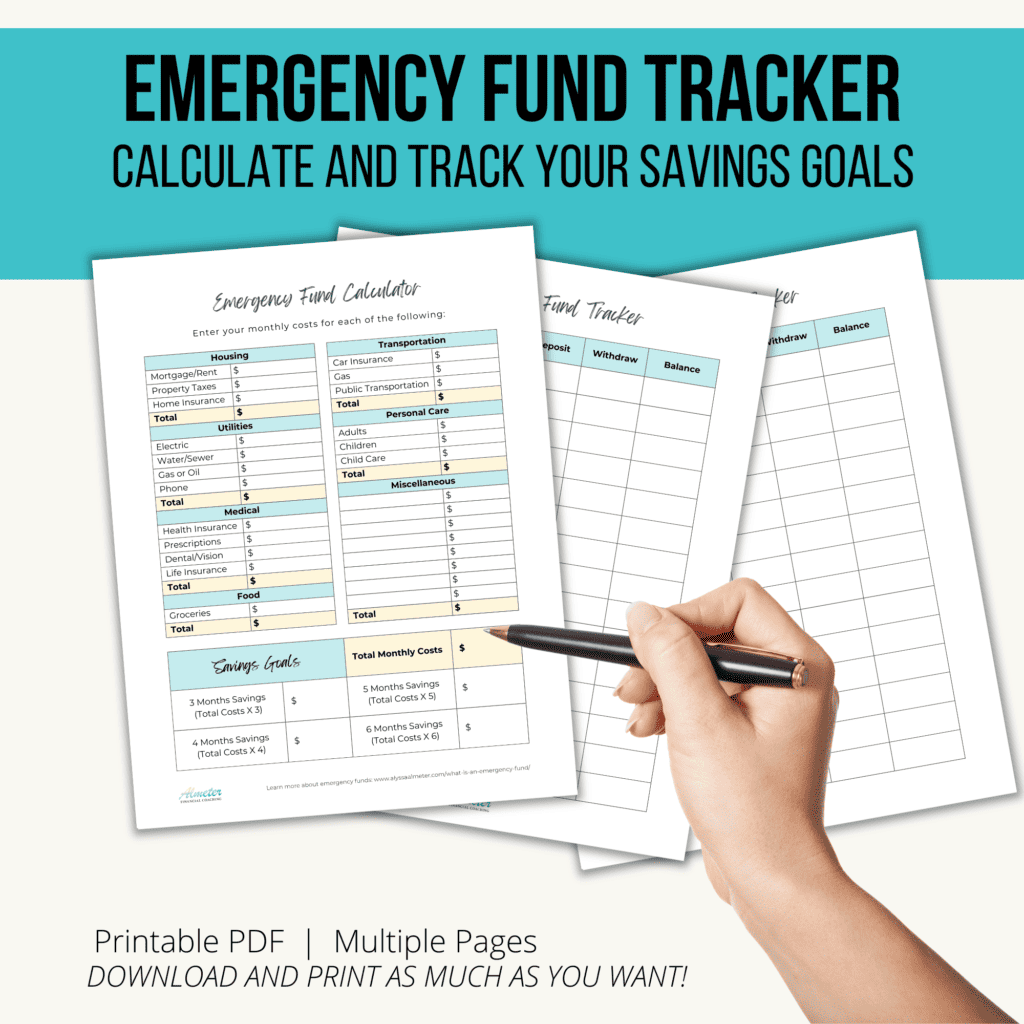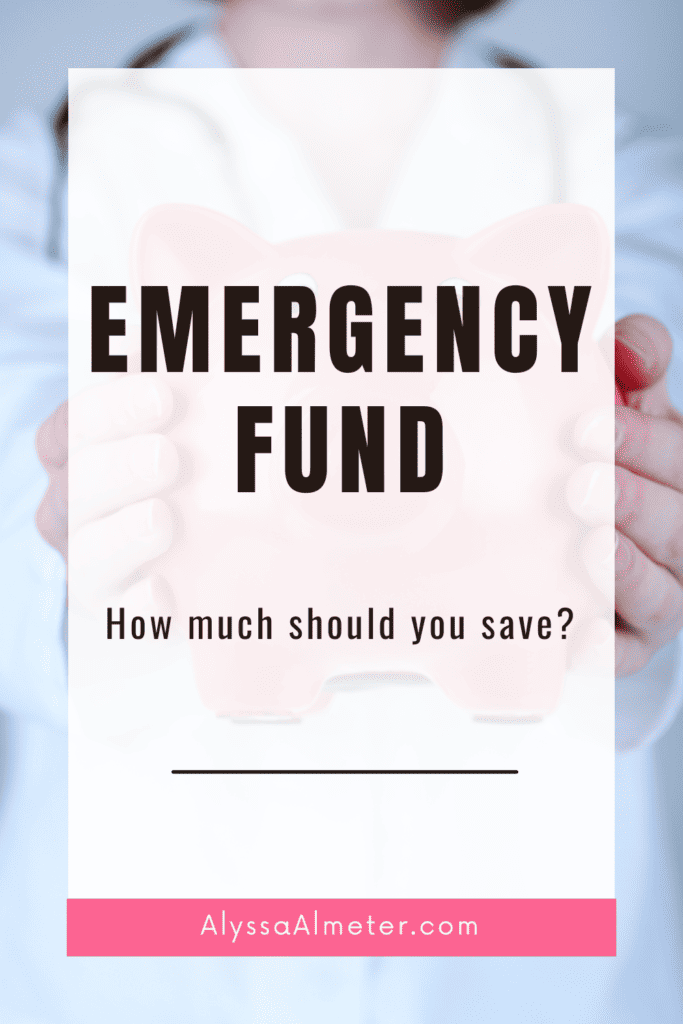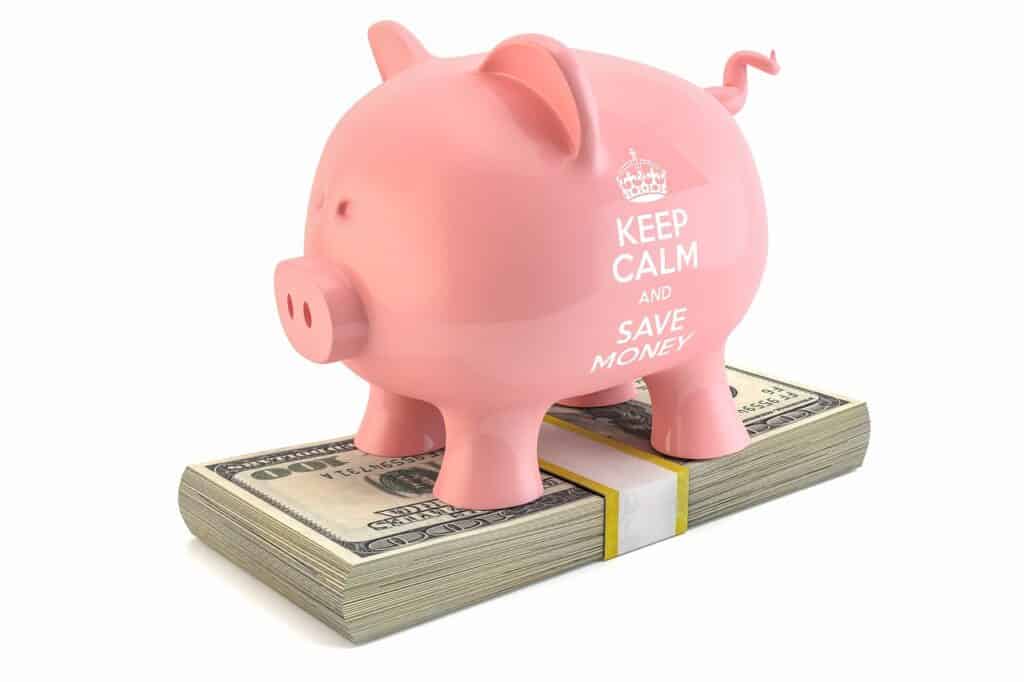Your Emergency Fund is Your Financial Safety Net
If you lost your job, could you cover your household expenses for a few months before you found a new job? If you have a major home repair, could you cover it without going into debt? That is the power of an emergency fund!
In this post I will share why it’s important to have savings you can fall back on, how much you should have and where you should have it.
What is an Emergency Fund?
An emergency fund is basically your financial safety net from life’s unexpected events. Nobody is immune to financial surprises, no matter how well you plan. Your emergency fund is there to cover large expenses without having to go into debt.
How Much Money Should You Save?
Start with $1,000 Saved
If you don’t have any savings at all your first goal should be to save $1,000 in a starter fund. Financial guru, Dave Ramsey recommends $1,000 to start with because it gives you a little breathing room before you tackle any small debts. That $1,000 is there to possibly cover a car repair, medical bill, small home repair, or any other type of small surprise so that you don’t have to use credit cards and go further into debt.
A lot of people wonder if $1,000 is enough.
If you don’t have any savings then it’s a great start! That gives you some margin and a weight off your shoulders for when things come up.
$1,000 isn’t meant to cover every possible thing that might come up. Again it’s just there so you have some breathing room while you tackle your debts.
Once you save $1,000 and payoff all your consumer debts (everything except the mortgage) then it’s time to build up your savings.
Full Emergency Fund
The recommended amount of a fully funded emergency fund is 3 to 6 months worth of expenses. This is not necessarily 3 to 6 months of income. Just your necessary expenses.
To determine how much your monthly expenses are, add up all your expenses (food, utilities, housing, transportation, personal care, etc.). Once you have that number, multiply it by how many months you would like to have in savings (3 to 6).

Things to Consider When Calculating Your Savings Goal
Do you want to be closer to the 3 month or 6 month range? That depends on a few things and remember it’s a suggested range. Do whatever is comfortable for you. If your income is unstable or you are supporting a family, you may want to have closer to 6 months.
Things to consider when determining your emergency fund goal:
- Job stability
- Income stability, inconsistent income
- Single vs. Married and/or Family
- Health issues for you or a family member that might put you out of work for an extended time.
- Home condition – likelihood of needing major repairs
What Should I Use My Emergency Fund For?
Your emergency fund is your backup plan for unplanned expenses. That may include a job loss, pay cut, surprise home or car repairs, or medical expenses. Anything that life throws your way that you weren’t planning on.
It is not for vacations, new furniture, or general “wants.” These are not emergencies. Yes, you should still be saving up for those things but those would be considered sinking funds.
It’s a good idea to decide exactly what you want to use your emergency fund for so it doesn’t become a question later when you are thinking about tapping into it. This is especially important if you’re married. It can help you avoid money fights.

Where to Put Your Emergency Fund
The best place to keep your emergency fund is in a savings account linked to your checking account. You don’t need to worry about finding the savings account with the best interest rate. Earning money on interest is not the goal here. You want to have it easily accessible so that you can withdraw it when needed. But you also want it separate from your checking account so you don’t carelessly spend it.
Conclusion
In conclusion, establishing a strong financial safety net through an emergency fund is a crucial step toward achieving financial stability and peace of mind. By understanding the significance of having a financial cushion, you empower yourself to navigate unexpected challenges with confidence.
As you embark on this journey to financial peace, take the next proactive step by downloading our Emergency Fund Tracker printable. This tool will not only help you set realistic savings goals but also track your progress along the way, ensuring that you are well-prepared for whatever life may throw your way.
Related Articles to Help You Save More Money
How to Quickly Save $1,000 for an Emergency Fund
Mastering Financial Wellness: Tips and Tools
Dave Ramsey’s 7 Baby Steps to Financial Peace


